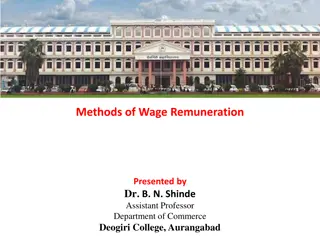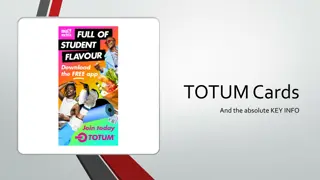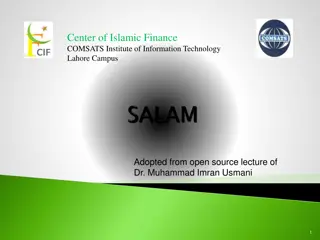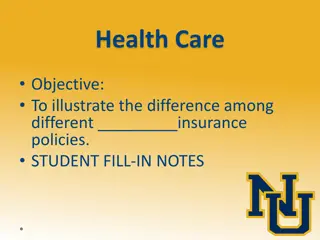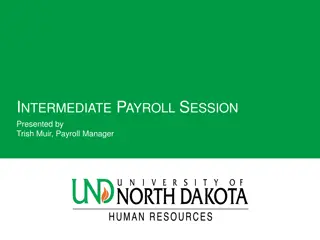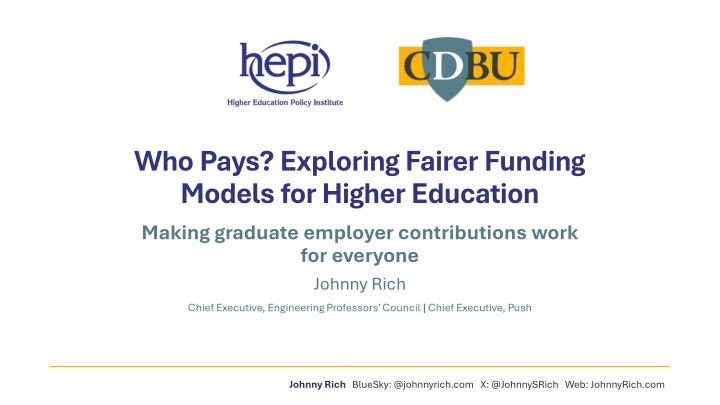
Exploring Fairer Funding Models for Higher Education
Discover innovative funding models for higher education proposed by Johnny Rich, Chief Executive of Engineering Professors Council. The discussion includes abolishing tuition fees, introducing employer contributions, and garnering public support for an employer levy. Learn how these changes could lead to sustainable funding, fairer access, and taxpayer savings in the higher education sector.
Uploaded on | 0 Views
Download Presentation

Please find below an Image/Link to download the presentation.
The content on the website is provided AS IS for your information and personal use only. It may not be sold, licensed, or shared on other websites without obtaining consent from the author. If you encounter any issues during the download, it is possible that the publisher has removed the file from their server.
You are allowed to download the files provided on this website for personal or commercial use, subject to the condition that they are used lawfully. All files are the property of their respective owners.
The content on the website is provided AS IS for your information and personal use only. It may not be sold, licensed, or shared on other websites without obtaining consent from the author.
E N D
Presentation Transcript
Who Pays? Exploring Fairer Funding Models for Higher Education Making graduate employer contributions work for everyone Johnny Rich Chief Executive, Engineering Professors Council | Chief Executive, Push Johnny Rich BlueSky: @johnnyrich.com X: @JohnnySRich Web: JohnnyRich.com
What if? Abolish fees Adequate and sustainable funding for high-quality HE A HE sector that meets skills needs for society, for the economy and for employers Balance employer needs with student ambitions and choice Progressive repayments for maintenance costs Reduce repayments from graduates/employer from 9% to 6% Funding to support fair access for those institutions best at delivering it De-politicise HE funding Save taxpayers over 8Bn a year Johnny Rich BlueSky: @johnnyrich.com X: @JohnnySRich Web: JohnnyRich.com
What if this were popular? Graduate Employer Contributions Baseline scenario From: How should undergraduate degrees be funded? A collection of essays, ed R Stephenson, HEPI April 2024 Johnny Rich BlueSky: @johnnyrich.com X: @JohnnySRich Web: JohnnyRich.com
What if this were popular? 59% of the public would support an employer levy the most popular option polled Public First survey, 2023 Johnny Rich BlueSky: @johnnyrich.com X: @JohnnySRich Web: JohnnyRich.com
How would it work? 1 Abolish tuition fees Students can still access maintenance loans Johnny Rich BlueSky: @johnnyrich.com X: @JohnnySRich Web: JohnnyRich.com
How would it work? 2 Employer contributions Move tuition payments from the employee side to employer side 3% from graduate for maintenance loan repayment 3% from employer for HE costs 3% saved Johnny Rich BlueSky: @johnnyrich.com X: @JohnnySRich Web: JohnnyRich.com
Employer contributions Currently Graduate earns 30k Pays 9% over 25k: 450 Graduate gets 29,550* Employer pays 0 Costs employer 30k* Employer contributions Graduate earns 30k Pays 3% over 25k: 150 Graduate gets 29,850* Employer pays 150 Costs employer 30,150* * Before tax & NICs Johnny Rich BlueSky: @johnnyrich.com X: @JohnnySRich Web: JohnnyRich.com
Employer contributions Currently Graduate earns 30k Pays 9% over 25k: 450 Graduate gets 29,550* Employer pays 0 Costs employer 30k* Employer contributions Graduate earns 30k Pays 3% over 25k: 150 Graduate gets 29,850* Employer pays 150 Costs employer 30,150* Costs employer 29,947* Graduate earns 29,800k Pays 3% over 25k: 147 Graduate gets 29,653* Employer pays 147 * Before tax & NICs Johnny Rich BlueSky: @johnnyrich.com X: @JohnnySRich Web: JohnnyRich.com
How would it work? 3 Contributions go to the graduate s HE institution Giving universities a stake in the future employability of their students Johnny Rich BlueSky: @johnnyrich.com X: @JohnnySRich Web: JohnnyRich.com
How would it work? 4 National Access Fund HEIs that underperform on access pay in HEIs that exceed benchmarks draw down Redistributes and encourages fair access and diversity Johnny Rich BlueSky: @johnnyrich.com X: @JohnnySRich Web: JohnnyRich.com
How would it work? 5 Government lends to HEIs not students (on similar terms as current tuition loans) Manages transition to self-sufficiency Attractive to government under new PSNFL rules Johnny Rich BlueSky: @johnnyrich.com X: @JohnnySRich Web: JohnnyRich.com
Economic modelling Saves Exchequer over 8Bn per cohort* Comes from employers of rich graduates after 30 years Minus the cost of lending to HEIs Allows better maintenance support Allows us to solve funding crisis Funding to address skills shortages More with less * London Economics modelling for HEPI Johnny Rich BlueSky: @johnnyrich.com X: @JohnnySRich Web: JohnnyRich.com
Aligning interests Students The Triangle of Sadness The Rhombus of Regret Universities Taxpayers UK universities: from a Triangle of Sadness to a Brighter Future, S. Kapur, King s Policy Institute, 2023 Employers Johnny Rich BlueSky: @johnnyrich.com X: @JohnnySRich Web: JohnnyRich.com
The four horses of happiness Johnny Rich BlueSky: @johnnyrich.com X: @JohnnySRich Web: JohnnyRich.com













